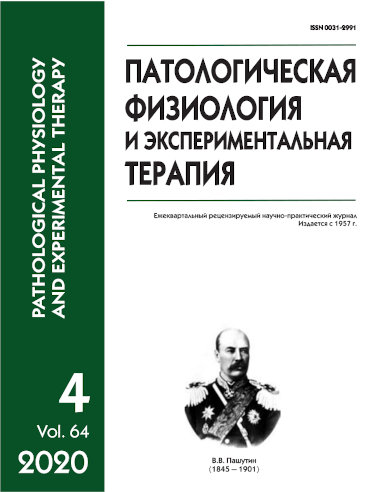Опыт ксенотрансплантационного гетеротопического моделирования колоректального рака различных клеточных типов у бестимусных мышей линии BALB/c nude
DOI:
https://doi.org/10.25557/0031-2991.2020.04.148-152Ключевые слова:
гетеротопическое моделирование, колоректальный рак, модели опухолей, ксенотрансплантация, ксенографтАннотация
Введение. Высокий уровень заболеваемости колоректальным раком стимулирует поиск методов его своевременной диагностики и эффективной терапии, что, в свою очередь, предполагает использование адекватных животных моделей на стадиях разработки и доклинических исследований.Методика. Для моделирования гетеротопических ксенографтов были использованы клеточные культуры колоректального рака человека линий DLD-1, HCT 116 и HT-29. В качестве носителей опухолевых моделей были взяты мыши линии BALB/c nude. Суспензию клеток вводили подкожно в область лопатки с помощью шприца.Результаты. Полученные из Американской коллекции типовых культур (ATCC) клетки культивировали до достижения необходимого количества для моделирования ксенографтов (20 сут). Клетки линии HCT-116 культивировались активнее и образовывали монослой в 3 раза быстрее, чем клетки линии DLD-1 и HT-29. Выживаемость мышей после проведения процедуры подкожной ксенотрансплантации составляла 100%. Образование ксенографтов объемом около 1 см3 наблюдали на 17-е – 26-е сут после прививания клеток. Приживаемость введённых клеток составила 100% для линии HCT-116. Для клеток колоректального рака человека линий DLD-1 и HT-29 приживаемость составила 75% и 60%, соответственно.Заключение. При экспериментальном моделировании подкожных гетеротопических ксенографтов колоректального рака человека на мышах линии BALB/c nude была получена высокая степень воспроизводимости при 100%-ной выживаемости животных-носителей.Загрузки
Опубликован
2020-11-26
Выпуск
Раздел
Методика
Как цитировать
[1]
2020. Опыт ксенотрансплантационного гетеротопического моделирования колоректального рака различных клеточных типов у бестимусных мышей линии BALB/c nude. Патологическая физиология и экспериментальная терапия. 64, 4 (Nov. 2020), 148–152. DOI:https://doi.org/10.25557/0031-2991.2020.04.148-152.













